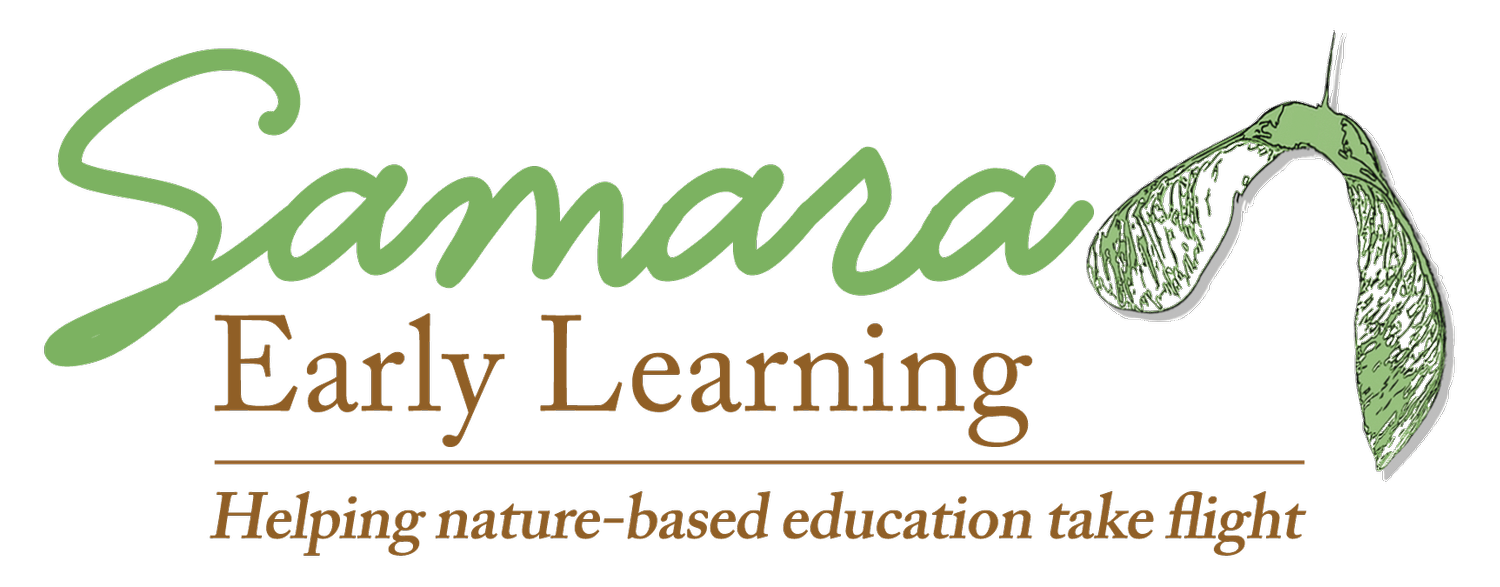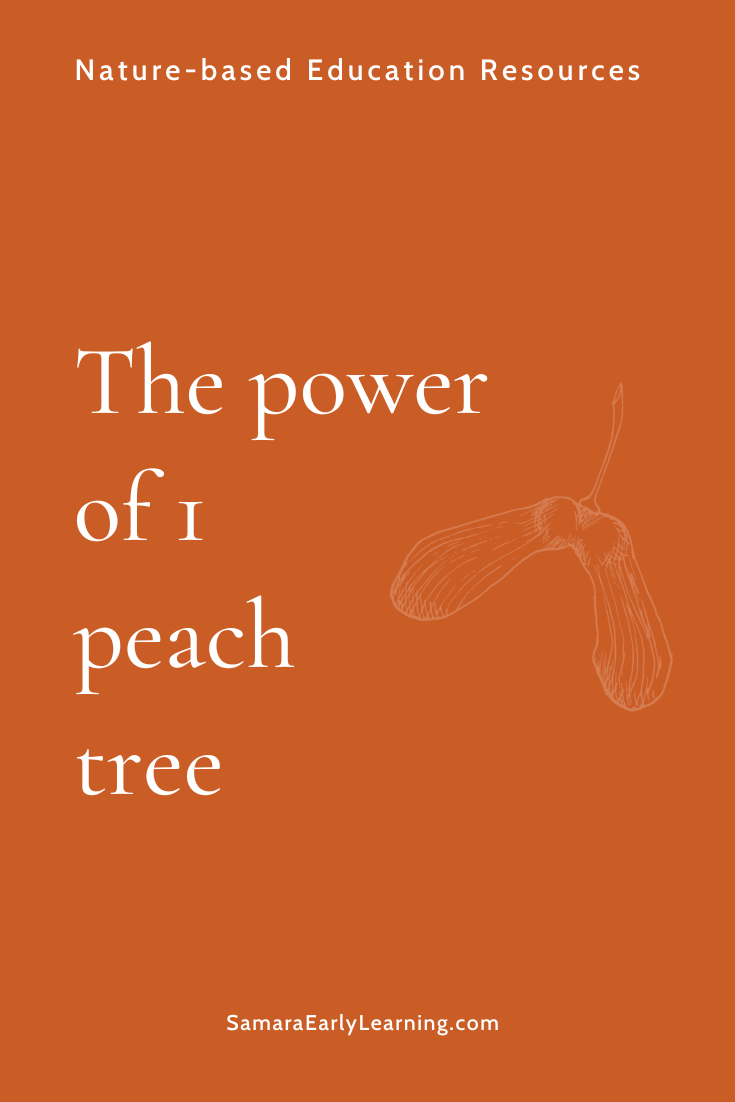The power of 1 peach tree
This post originally appeared in Dr. 瑞秋一. Larimore’s weekly Samara newsletter on September 19, 2023. If you’re interested in receiving these emails, scroll to the bottom of this page to subscribe.
“The children were so excited to get to eat the peaches! They’ve been watching the tree for months just waiting for the right time. They saw the leaves come out, the flower, and then the fruit sloooowly growing.”
A home provider recently shared this story 与 me about the peach tree in her backyard. She went on to describe the pure joy the children experienced in eating the peaches they had watched for so long.
I was thrilled to hear this story because it is a prime example of learning on nature time, 向自然学习, 以地方为基础.
Peaches don’t grow quickly. It takes years for the tree to produce fruit. Then when it does fruit it takes months to go from the first leaves of spring to a ripe fruit in late summer. Most things in nature don’t happen quickly. Most changes in nature are slow and subtle over long periods of time. This is what we call “nature time.”
One of the strengths of nature-based education is that children get to learn on nature’s time. They witness these subtle changes everyday. These changes then spark observations and questions like, “These aren’t peaches! 这些是绿色的. 桃子是橙色的.” Then several weeks later…”There’s orange on this peach!”
By learning on nature time children are also 向自然学习. In this case children experienced a green peach, asked questions about it, and then later had another experience. This back-and-forth between nature and children create experiences which lead to learning about nature in personal, 有意义的方式.
When children learn 与 nature, children make both an emotional and intellectual connection to peaches. They now know peaches start green and slowly grow into a ripe, juicy fruit. And they also now have experienced the joy of eating a fresh, juicy peach right off the tree! These connections to peaches will stay 与 them much longer than if an adult had simply told them the life cycle of a peach. (Or asked them to color in a worksheet!)
Not only is the peach story a prime example of nature time and 向自然学习, 它也是基于地点的! The children experienced this tree in their own play area–right where they are day-in and day-out. There are also other peach trees and farms in their community. 换句话说, peaches are part of their school community, but also the broader community where they live. On the weekend a child might go to the local peach orchard and realize, “Woah! There are way more peach trees here than we have at school.” And the value of this? Connections in and out of school helping them to build on their prior experiences to extend and refine their learning about the world around them.
That’s a lot of power in a peach, isn’t it?! And we haven’t even talked about learning about fruits 与 stones, 不同的味道, 叶子的形状, insects eating the fruit, 等.
I guarantee children learned SO much more than the fact that peaches grow on trees and we can eat them! And yet even if that’s all they learned? I’d say it’s still a win for 向自然学习, in local nature, and on nature’s time.
不断改变生活,
瑞秋
瑞秋一. Larimore, Ph值.D., Chief Visionary of Samara Learning

